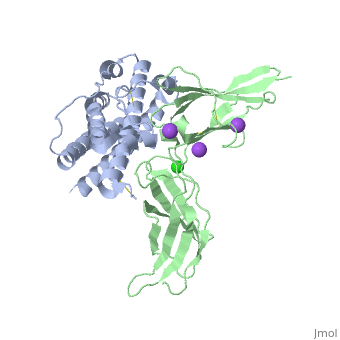Prolactin
FunctionProlactin (PRL) is a hormone which has numerous effects. It enables females to produce milk. PRL provides the body with sexual gratification. PRL promotes neurogenesis in maternal and fetal brains. PRL stimulates cells which are responsible for the formation of myelin coating on axons. See also Prolactin (Hebrew). DiseaseRelevanceStructural highlights |
| ||||||||||
3D Structures of prolactinin3D Structures of prolactinin
Updated on 20-May-2015
1rw5 – hPRL – human - NMR
2q98 – hPRL (mutant)
3mzg, 3npz – hPRL + hPRL receptor extracellular domain
3d48, 3n06, 3n0p, 3ncb – hPRL (mutant) + hPRL receptor extracellular domain
3ncc, 3nce, 3ncf – hPRL (mutant) + hPRL receptor extracellular domain (mutant)
3ew3 – hPRL + rPRL receptor extracellular domain - rat
4i18 - hPRL receptor extracellular domain + antibody
